● FCP - FortiManager 7.4 Administrator Exam Materials
The Actual questions for FCP - FortiManager 7.4 Administrator (FCP_FMG_AD-7.4) - Updated Weekly
Question #1
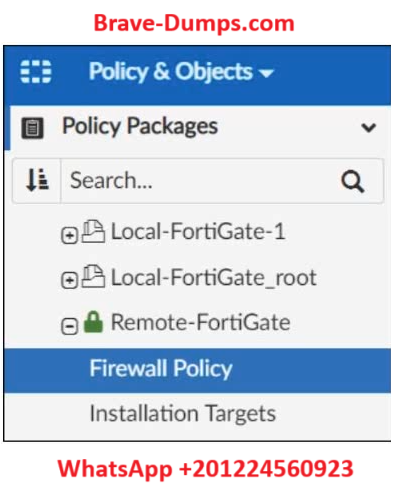
Question #2
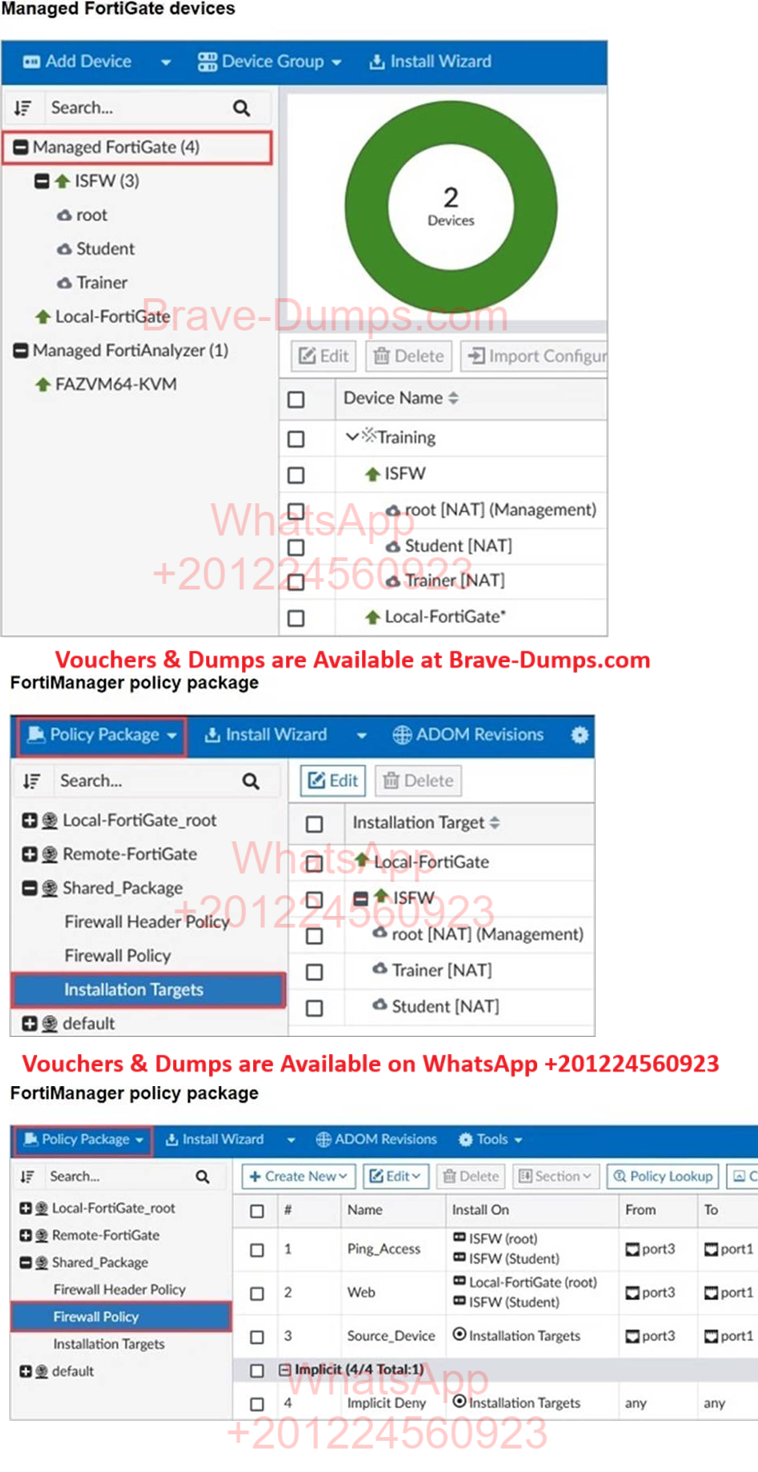
Refer to the exhibit.
Given the configuration shown in the exhibit, which two conclusions can you draw from the installation targets in
the Install On column?
(Choose two answers)
- A. Policy seq.# 3 will be installed on all managed devices and VDOMs that are listed under Installation Targets
- B. Policy seq.# 3 will be skipped because no installation targets are specified.
- C. Policy seq.# 2 will not be installed on the Local-FortiGate root VDOM because there is no root VDOM in the Installation Target.
- D. Policy seq.# 1 will be installed on the ISFW device root[NAT] and Student[NAT] VDOMs only.
Question #3
What will be the result of reverting to a previous revision version in the revision history? (Choose one answer)
- A. It will generate a new version ID and remove all other revision history versions.
- B. It will install configuration changes to managed device automatically.
- C. It will tag the device settings status as Auto-Update.
- D. It will modify the device-level database.
Question #4
An administrator would like to create a policy on the Staging ADOM in backup mode, and install it on the FortiGate device in the same ADOM.
How can the administrator perform this task?
(Choose one answer)
- A. A. The administrator must use the Policy & Objects section to create a policy first.
- B. B. The administrator must use a FortiManager script.
- C. C. The administrator must disable the FortiManager offline mode first.
- D. The administrator must change the ADOM mode to Advanced to bring the FortiManager online
Question #5
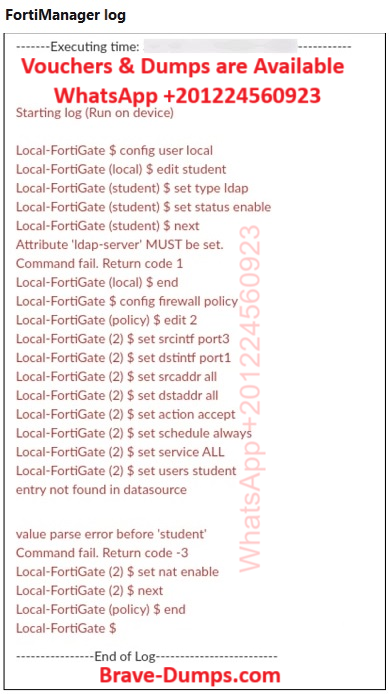
Refer to the exhibit.
What can you conclude from the failed installation log shown in the exhibit?
(Choose one answer)
- A. Policy ID 2 is installed in the disabled state.
- B. Policy ID 2 is installed without the remote user student.
- C. Policy ID 2 will not be installed.
- D. Policy ID 2 is installed without a source address.
Question #6
In the event that one of the secondary FortiManager devices fails, which action must be performed to return the FortiManager HA manual mode to a working state? (Choose one answer)
- A. The FortiManager HA state transition is transparent to administrators and does not require any reconfiguration.
- B. Manually promote one of the working secondary devices to the primary role, and reboot the old primary device to remove the peer IP of the failed device.
- C. Reconfigure the primary device to remove the peer IP of the failed device.
- D. Reboot the failed device to remove its IP from the primary device.
Question #7
An administrator has assigned a global policy package to custom ADOM1. Then the administrator creates a new policy package, Fortinet, in the custom ADOM1.
What happens to the Fortinet policy package when it is created?
(Choose one answer)
- A. You must assign the global policy package from the global ADOM.
- B. The global policy package is automatically assigned.
- C. You must reapply the global policy package to ADOM1
- D. You can select the option to assign the global policies.
Question #8
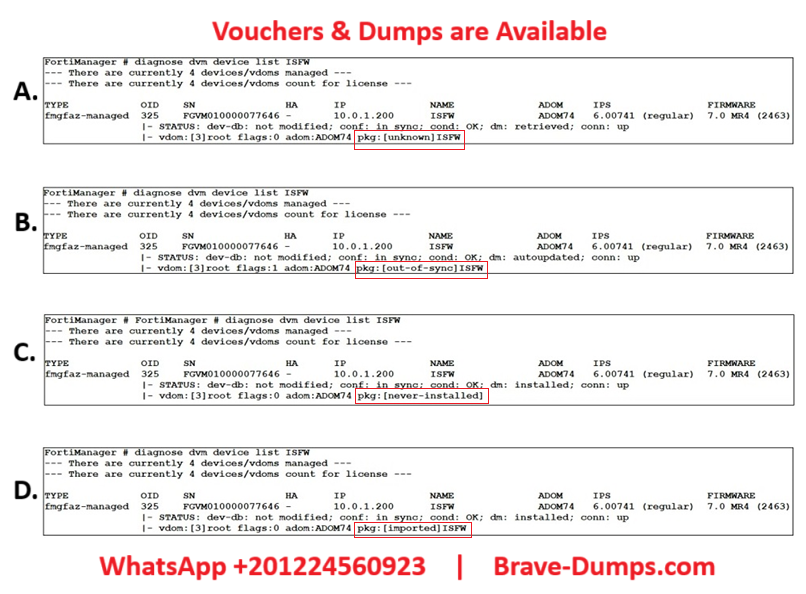
Which output is displayed right after moving the ISFW device from one ADOM to another? (Choose one answer)
- A. Image A
- B. Image B
- C. Image C
- D. Image D
Question #9
An administrator has enabled Service Access on FortiManager.
What is the purpose of Service Access on the FortiManager interface?
(Choose one answer)
- A. It allows administrative access to FortiManager.
- B. It allows FortiManager to respond to requests for FortiGuard services from FortiGate devices.
- C. It allows FortiManager to determine the connection status of managed devices
- D. It allows third-party applications to gain read/write access to FortiManager.
Question #10
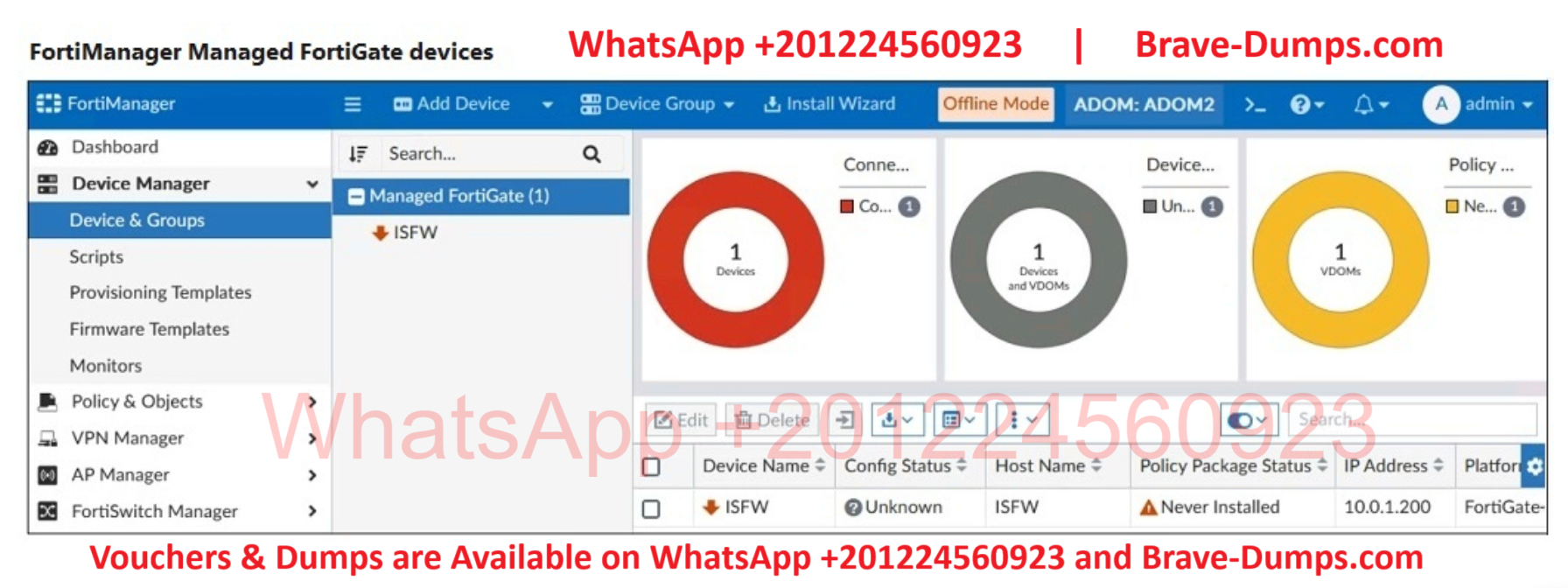
Refer to the exhibit.
A junior administrator is troubleshooting a FortiManager connectivity issue that is occurring with a managed
FortiGate device.
Given the FortiManager device manager settings shown in the exhibit, what can you conclude from this scenario?
(Choose one answer)
- A. The administrator must refresh the device to restore connectivity.
- B. FortiManager lost internet connectivity, therefore, the device appears to be down.
- C. The administrator can reclaim the FortiGate to FortiManager protocol (FGFM) tunnel to get the device online.
- D. The administrator recently restored a FortiManager configuration file
Given the configuration shown in the exhibit,
which two statements are true? (Choose two answers)